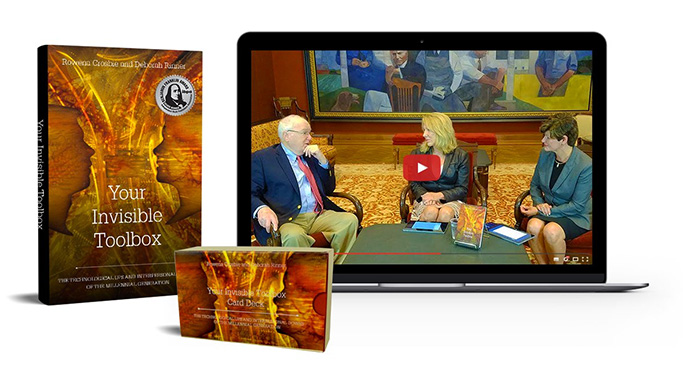Different emotional states lend themselves to different circumstances. We can learn to recognize and choose which emotional state works best for us to create success in our interactions.
If you want to run a marathon, a state of alertness is probably most desirable. If you plan to make a presentation, a state of confidence is most desirable. If you want to fall asleep, complete relaxation would be your desired state.
Once we identify the emotional state we want, the challenge is to engage it and then to hold on to it when it is threatened by fear or discomfort.
So how do we manage to access the emotional state that leads to a success?
The technique for choosing and accessing these attitudes is called imprinting. When a foal (baby horse) is born, the breeder makes an effort to be present for the birth. If not, then very soon after. Then the breeder (or trainer) spends an enormous amount of time during a compressed time span (about three days) to imprint triggers into the new foal. This process involves helping the animal become comfortable with human touch and human presence. The breeder or trainer works with the animal's hooves, legs, body, ears, mouth, etc. to get the animal "used to" the touch. The result is a lasting effect on future behavior. Even in adulthood, the horse will exhibit positive behavior when the appropriate stimulus is present.
Like the horse, you and I have been imprinted in a number of ways. Through the imprinting process, attitudes can be changed. The more powerful the imprinting process you use, the easier the transition you will have to your desired emotional state.
Since most of this happens at an unconscious level, we are unaware of the triggers that have been imprinted into us. For many people, a dreary day triggers a gloomy attitude. Monday morning triggers a lethargic emotional state for some. Friday afternoon triggers a happy emotional state. Allowing the day of the week or the weather to serve as triggers for our emotional states can be risky. Doesn't it make sense to take advantage of the opportunity to choose triggers to engage desired emotional states on a conscious level to visualize and create success?
Let's look at the steps for doing this.
Here are the 7 steps for imprinting triggers to change your emotional state:
1. The first step is to choose your desired emotional state.
2. The second step is to select a trigger. Since you'll want to easily access your trigger, it should be a trigger that is always available to you. Some people carry around "good luck charms". For others it may be a lucky item of clothing. Some choose a favorite scent. Other a food item. For others, a touch such as touching your thumb and baby finger together.
3. The third step is to access the desired emotional state. You can do this either by imprinting the trigger while you are actually in the emotional state or you can access it in your mind and body right here in the workshop. Can you change emotional state simply by thinking about it? Absolutely. You can probably access the state of hunger by thinking about a warm slice of apple pie with ice cream melting on it. Similarly, when you watch a scary movie, even though you are not in a scary situation (you are probably sitting on your comfortable sofa with a beverage of your choosing) you access the emotional state of anxiety and fear simply by watching someone on the TV screen experiencing a scary situation.
4. The fourth step is to imprint the trigger while you are experiencing the desired emotional state. Hold the trigger for the entire time you are in the desired emotional state. Once the emotional state begins to descend, release the trigger.
5. The fifth step is to break the emotional state completely. Think of something completely non-related that requires some thought. Reciting your telephone number backwards is a good method for breaking state.
6. Test the trigger is the sixth step. See if the desired emotional state returns. Naturally, the more frequently we imprint the trigger, the more easily we can access the desired emotional state.
7. Step seven is to access the emotional state by using your trigger whenever needed and as often as necessary.
The Your Invisible Toolbox® Movement tackles the challenges most individuals, teams, and organizations face. An award-winning book paired with a companion YouTube show and card deck, provide a unique set of research-based tools, put together in an easy-to-apply road map to success.
Find Out More and Join The Movement